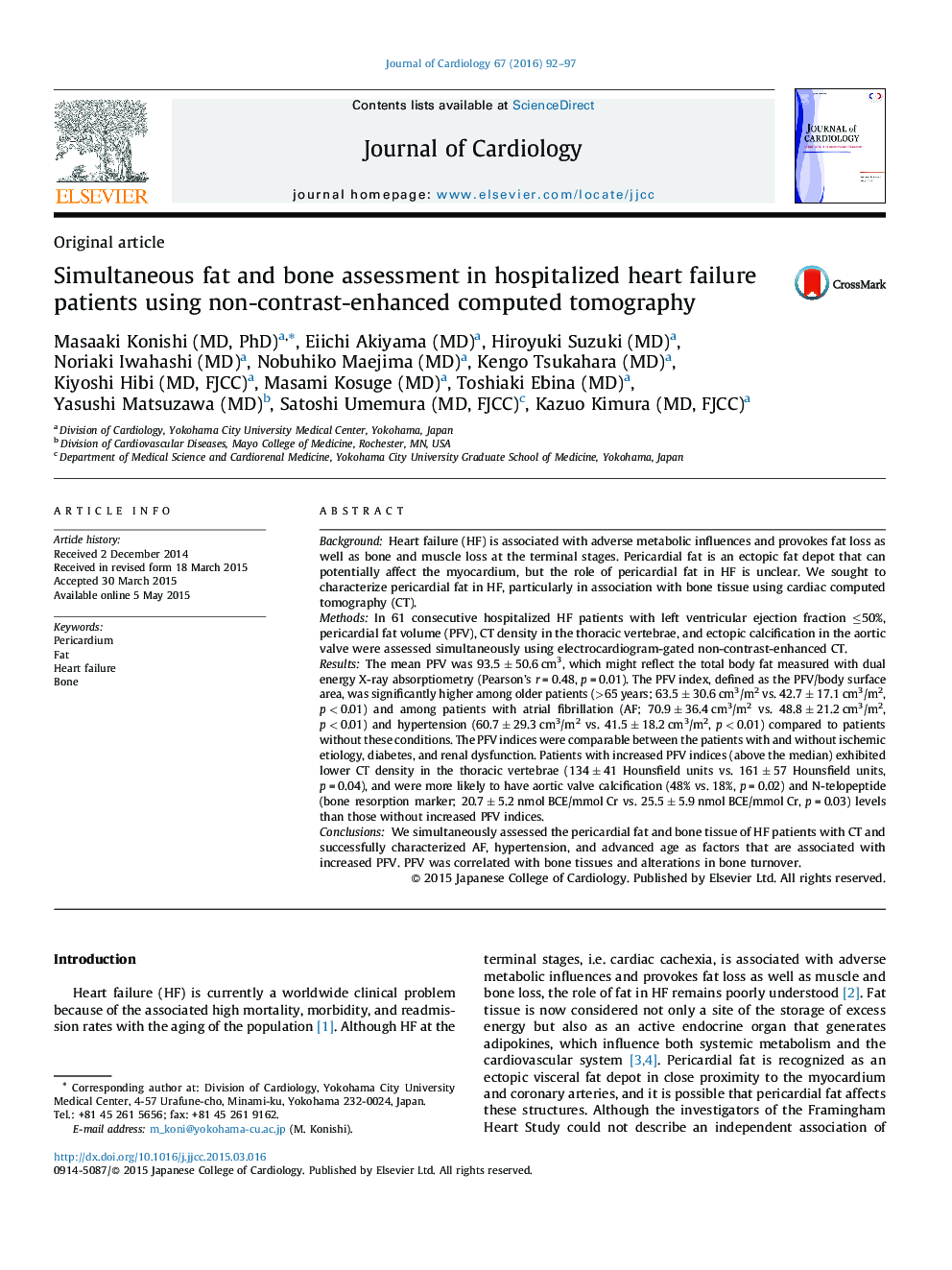| کد مقاله | کد نشریه | سال انتشار | مقاله انگلیسی | نسخه تمام متن |
|---|---|---|---|---|
| 2962909 | 1178512 | 2016 | 6 صفحه PDF | دانلود رایگان |
BackgroundHeart failure (HF) is associated with adverse metabolic influences and provokes fat loss as well as bone and muscle loss at the terminal stages. Pericardial fat is an ectopic fat depot that can potentially affect the myocardium, but the role of pericardial fat in HF is unclear. We sought to characterize pericardial fat in HF, particularly in association with bone tissue using cardiac computed tomography (CT).MethodsIn 61 consecutive hospitalized HF patients with left ventricular ejection fraction ≤50%, pericardial fat volume (PFV), CT density in the thoracic vertebrae, and ectopic calcification in the aortic valve were assessed simultaneously using electrocardiogram-gated non-contrast-enhanced CT.ResultsThe mean PFV was 93.5 ± 50.6 cm3, which might reflect the total body fat measured with dual energy X-ray absorptiometry (Pearson's r = 0.48, p = 0.01). The PFV index, defined as the PFV/body surface area, was significantly higher among older patients (>65 years; 63.5 ± 30.6 cm3/m2 vs. 42.7 ± 17.1 cm3/m2, p < 0.01) and among patients with atrial fibrillation (AF; 70.9 ± 36.4 cm3/m2 vs. 48.8 ± 21.2 cm3/m2, p < 0.01) and hypertension (60.7 ± 29.3 cm3/m2 vs. 41.5 ± 18.2 cm3/m2, p < 0.01) compared to patients without these conditions. The PFV indices were comparable between the patients with and without ischemic etiology, diabetes, and renal dysfunction. Patients with increased PFV indices (above the median) exhibited lower CT density in the thoracic vertebrae (134 ± 41 Hounsfield units vs. 161 ± 57 Hounsfield units, p = 0.04), and were more likely to have aortic valve calcification (48% vs. 18%, p = 0.02) and N-telopeptide (bone resorption marker; 20.7 ± 5.2 nmol BCE/mmol Cr vs. 25.5 ± 5.9 nmol BCE/mmol Cr, p = 0.03) levels than those without increased PFV indices.ConclusionsWe simultaneously assessed the pericardial fat and bone tissue of HF patients with CT and successfully characterized AF, hypertension, and advanced age as factors that are associated with increased PFV. PFV was correlated with bone tissues and alterations in bone turnover.
Journal: Journal of Cardiology - Volume 67, Issue 1, January 2016, Pages 92–97
